
Retro Fails: 10 Real Flying Saucers that Never Really Lifted Off
By Debra Kelly, Urban Ghosts Media, 30 March 2015.
By Debra Kelly, Urban Ghosts Media, 30 March 2015.
With so many reports of unidentified flying objects in the sky, it’s hard not to be at least mildly intrigued by the idea of ‘flying saucers’. We want to know what - and who - is out there, and there’s perhaps a little bit of us that wants to see it all for ourselves. But throughout the Cold War and earlier, a number of bizarre - and very terrestrial - attempts were made to build a range of craft that never quite took off, but may have helped fuel the many alien conspiracy theories that abound today. The latest instalment of our Retro Fails series delves into these vintage flying saucer-like designs.
10. Project 1794
In the mid-1950s, the United States government was knee-deep in the middle of an incredibly ambitious - and pretty bizarre - plan. Project 1794, only declassified in 2012, was a collaboration between a Canadian aviation firm and the U.S. military, with the ultimate goal of building their own flying saucer that would revolutionize aircraft. At the time, there were a few mentions in the press about the Air Force’s attempts at designing a new type of aircraft that would lift off vertically - but the full plans were top secret.
The blueprints show what looks like the flying saucer to end all flying saucers. When you think of what was seen hovering over the streets and descending on terrified civilians in the 1950s, that’s what Project 1794 was trying to build.
The goals of the project were incredibly ambitious. Not only was the craft going to be capable of a vertical take-off, but it was going to have a flight ceiling of 100,000 feet (19 miles), and a top speed of 2,880 miles per hour - that’s Mach 4.
The plans were cancelled by 1961. The craft that had the hopes of the nation riding on it could barely get off the ground, and when it did move, it had a top speed of about 35 miles per hour. Plans and blueprints had hoped that it would be capable of out-performing and out-manoeuvring anything that the Soviet Union had, giving the United States an incredible edge during the Cold War. Unfortunately, the design just never proved itself, and the plans for the project were relegated to the dark corners of storage facilities.
9. Avro Canada VZ-9 Avrocar
When those involved with Project 1794 were ready to make a real-life prototype of their craft, the result was the VZ-9 Avrocar. Named for the Canadian aviation firm, the Avrocar was, in theory, pretty wild.
Turbojet engines provided a circular, downward thrust that would allow the craft to rise directly off the ground; it would build up a cushion of air, floating at low altitudes and moving forward when the thrusters were re-aimed.
The Avrocar was originally a Canadian-funded and researched invention that they had been working on since 1952. Not having any luck, the U.S. Air Force got involved by 1958, and a series of test flights were done at Wright-Patterson Air Force Base in Ohio.
Unfortunately it was, of course, a bust. The cushion of air was only enough to support the craft while it was a few feet off the ground, and the second Avrocar prototype performed no better. When it rose more than a few feet off the ground, it would spin and roll out of control.
Test pilots that worked on the project recall that the way it was designed went against everything they knew about making something that was aerodynamic and stable, and US$10 million into the project, it was ultimately scrapped. Pieces of the technology that was developed for the craft went elsewhere, though, with some of it going to an equally unlikely craft that’s used today to inspect bridges.
8. The Sack AS-6
Image: via Luft ’46
Alien technology and the Third Reich - it’s the stuff of science fiction, conspiracy theory and of speculative movies, but like all good rumours, there’s a little bit of truth to it.
In 1939, Arthur Sack revealed his vision of an aircraft with a circular wing at a national contest. It was a fail, but Germany’s Air Minister was intrigued enough to encourage him to keep going with the idea. The resulting craft, the AS-6, was cobbled together in part from pieces of other craft, and it started testing runs in 1944.
The strange craft had the central structure of a more standard plane, but with the circular wing that went all the way around the body, it’s thought that it might have been the source of a good number of rumours that the Germans were experimenting with UFO technology.
Image: via Luft ’46
The truth was much more mundane, though, but no more successful. The circular design of the wings on the plane made it incredibly unstable, and the original design didn’t have nearly enough power to get the plane anywhere near close to getting off the ground. Sack attempted to re-design the plane based on the results of the early tests, but sometime between its initial tests and 1945, the prototype was destroyed in an Allied bombing run. When Allies took Brandis airfield in April of 1945, no traces of the German saucer remained.
7. The Couzinet RC360 Aerodyne
Image: via ufologie.patrickgross.org
The Aerodyne was France’s entry into the realm of flying saucer-shaped aircraft, and, like its American counterparts, it was created with the goal of exploring the idea of a craft that could lift off vertically, and eliminate the need for a runway.
Its inventor was Rene Couzinet, who, by the age of 18, had already patented several aviation-related inventions. A member of the French Air Force, Couzinet was also the mastermind behind France first - but ill-fated - attempt at a transatlantic, commercial aircraft.
It was in the 1950s that he revisited an idea that had sparked his interest decades before - a craft that could take off like a helicopter but perform like an airplane. The result was the saucer-shaped Aerodyne, officially listed on the patent as the “Aerodyne with multiple wings.” The patent was only published in 1957, after his death, but it was an invention that wouldn’t live on.
Image: via ufologie.patrickgross.org
The only attempt at building the craft was a 3/5 scale model that was never intended to fly; especially since Couzinet hadn’t been successful in securing any kind of funding or support from the government. The design was largely inspired by the times - in 1950s France, there were reports after reports of UFOs and flying saucers, and it seemed to go hand in hand with his vision. At the same time he could design a revolutionary craft, he could capture the imaginations of his countrymen.
Image: via LaesieWorks
The Aerodyne had six engines, which were designed to turn 96 small wings to provide the lift for the craft. Even though pretty much every official and aviation organization recognized it as a waste of time and money, the public and the media loved it. It was the “French flying saucer,” and optimistic journalists predicted that it was only a matter of time before scores of them were whizzing around the sky, replacing the more standard aircraft.
The story absolutely doesn’t have a happy ending. Even though the public was claiming it was the greatest advancement in aviation history, Couzinet himself was overwhelmed with debt. In 1956, he killed both his wife and himself.
6. The Astro Kinetics Flying Saucer
Image: via Popular Science, 1963
We don’t really know that much about the design, and there’s not a whole lot of information out there on it. In July of 1963, Popular Science ran a photo and a short blurb on a craft that was in the process of being developed by Astro Kinetics in Houston. The craft was lifted by air pumped out of the top of the craft, directed over the saucer-shaped roof. The pressure from the air would cause the craft to rise - in theory, although how successful it was is debatable, as it wasn’t heard from again.
The science was based on the Coanda effect, named for a creator who had a pretty hairy career. Said to have first building a jet engine in 1910, his ideas and principles in aerodynamics got the attention of the British government in 1945. He had been living in Paris, and according to the story, the French thought he was a German collaborator. The British, though, recognized the merit in his ideas and got him off the hook.
Image: via xplanes
The Coanda effect basically stated that a craft could be created with the capability of taking off vertically by using the scientific principle that when vented at a certain angle, air will cling to a surface and, channelled correctly, would allow a craft to rise and be steered by directing the flow of air. The problem, they admitted, came with making the craft stable; although the principles were explored in the Astro Kinetics experiments, just how far it went is clear in its relative disappearance.
5. EKIP
Also called the Russian UFO and designed in the 1990s, EKIP is a fairly recent addition to the roster of flying saucer-inspired aircraft, and there still may be a chance (although it’s not for certain) that with a renewal of funding, we still might see EKIP get off the ground.
The saucer-like craft was designed not to have wings, but to, in theory, have a fuselage that acted as wings. Everything is contained in the central cabin, along with the passenger compartment. Its vertical take-off capability allows it to land on - and lift off from - water and ice as well as more conventional landing platforms. Similar to other crafts of its type, it would hover on a cushion of air and be steered by jets that could be adjusted during flight.
According to the EKIP site - which is still up and running - the benefits of the craft are massive. In addition to not needing a runway, it has a massive carrying capacity, long range, and can be made to carry up to 1,000 passengers at one time. Operating and fuel expenses would be less than a traditional craft, they’re lighter, less complicated, and because the design allows them to get away from things like landing gear, less machinery means that there’s less things to keep up and less things to go wrong.
For now, it seems that EKIP is on a back burner somewhere, but we’re hoping that it gets dug out of the closet one of these days and takes to the skies.
4. The Lenticular Reentry Vehicle
Image: via Military.com
Not all documents relating to the U.S. military’s Lenticular Reentry Vehicle have been declassified, and it’s been suggested that the only reason something would still be considered top secret is that it’s still pertaining to an active military mission…which makes the once top-secret spacecraft even more intriguing.
The Lenticular Reentry Vehicle was an active project in the early 1960s. While it wasn’t even labelled top secret, it had a sort of double layer of protection and secrecy over it. One of the Pentagon’s “black budget” items, it was originally a part of another, less secretive project. The details remained classified until 1999, though, when it was finally released as a part of the Freedom of Information Act.
The craft was designed as an orbital craft capable of carrying a crew of four and four nuclear weapons. In theory, it would have been launched into orbit on the back of a multi-stage rocket, or, potentially, a NASA-researched rocket of its own. The mostly circular craft would have been divided into living sections and a weapons section, equipped with missiles that have now been banned by the various disarmament treaties signed into effect.
Images: via Military.com
When the crew wanted to return to Earth, they would have used the craft’s rocket motor and had their descent slowed by a parachute; the design is similar to one that’s currently being researched for integration into the International Space Station.
Just how far into the project researchers got isn’t entirely clear. It is suspected, though, that there was at least some sort of flying prototype that had been constructed in Australia and was potentially the craft sighted in several reports of UFO encounters in the 1970s. Debris recovered from the explosion of an unidentified craft south of Brisbane was recovered, tested, and found to contain pieces of a strange, honeycomb design and chemical residue consistent with extremely high-temperature explosions.
3. British Rail’s Flying Saucer
Image: Espacenet
In the 1970s, British Rail was looking at some pretty out-there ideas for the future of transportation. According to documents recently found at the European Patent Office, those plans included something along the lines of a nuclear-powered saucer.
The plans had been created by inventor Charles Osmond Frederick, and they were his answer to a request to design a ‘lifting platform’ for the company. The result looks a little bit more like something out of a science fiction novel, though; the saucer shaped craft has a passenger compartment on the top, and engines that were run via a nuclear fusion reaction that was started by lasers.
On one hand, it’s a pretty brilliant idea. According to the documents, it would have been incredibly affordable to run, and it would have been faster than anything else out there. It would have been excellent for long-distance travel, and it would have been, supposedly, a very smooth ride.
It would have been.
The drawbacks were pretty obvious, though, and its over-powered engines would have, in the end, had some limited usage. Just how destructive they had the potential to be was never explored, either, as the idea never made it past the planning stages and, eventually, the patents weren’t renewed.
2. Germany’s Early Flying Machine
Image: Google Patents
In 1898, Friedrich Alexander Jone applied for and secured a patent for improvements to flying machines.
It was mostly based on the shape, and according to the patent, most of the flying vessels that were being designed at the time were based on the shape of a bird. This one, however, was in the shape of something just as ancient but more often overlooked - the discus. He based his design on what he called the ‘discus of the ancients’, which he believed would be easier to control and fly than any other shape.
His discus sat on its edge, though, and was built around a lightweight frame that was steered by the use of a rudder. He also added the option for small wings, and suggested that some kind of electric generator be used to power the propulsion systems of the craft.
The patents diagram not so much the internal workings of the craft, but the physics of keeping it in the air and that would make it easier to control than other contemporary plans. While we obviously didn’t go along with his disk-shaped craft, it’s a pretty intriguing idea that makes one wonder just how long the idea of the flying saucer-shaped craft has been in our collective consciousness.
1. The Vought Flying Pancake
The Vought V-173, affectionately, and perhaps unfortunately, nicknamed the Flying Pancake, was a little unlike a number of these other saucer-shaped craft, in that it was actually pretty successful and pretty fondly remembered. In 2012, an eight-year restoration project on the only craft ever made was finally completed, returning the strange-looking, mildly successful aircraft back to its World War Two condition.
The idea was developed with the exploration of a low-aspect ratio wing that would allow a craft to remain airborne while flying at slow speeds. And it was sort of a success.
It made it debut flight on November 23, 1942, and over the next few years it successfully completed more than 190 flights, and logged 130 hours of flight time. Charles Lindbergh himself was at the controls for at least one of the flights, and its innovative design was an asset that added to its downfall. While it did just what they wanted it to be able to do, it wasn’t very practical in terms of service, maintenance and repairs. Its two giant propellers meant that when it was sitting on the ground, it was sitting at an angle with its nose in the air; that made the pilot look through the floor to see where he was going. The design also meant that the engines were buried in the fuselage, making it difficult to work on. That might not be an issue for a prototype, but any mass-produced craft needed to be easier to work on.
The death blow to the craft came with the advent of the jet engine. It was the jet engine that was the next revolutionary thing in flight, and the Pancake fell by the wayside.
It wasn’t completely forgotten about, though. The flight-capable prototype was saved by the National Air and Space Museum, when it was carefully restored and loaned out to the Frontiers of Flight Museum in Dallas, Texas. Now, it’s a reminder of just how incredible innovation can be.
Top image: Army Avrocars depicted as "flying jeeps" in company literature. Credit: Bzuk, public domain.
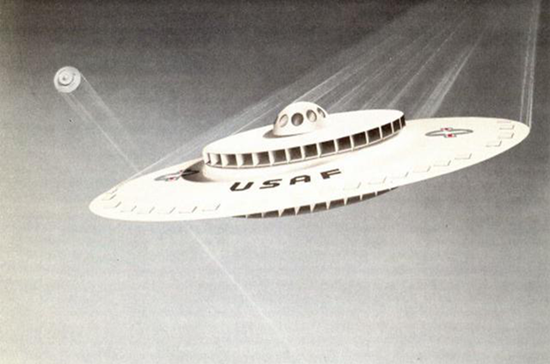
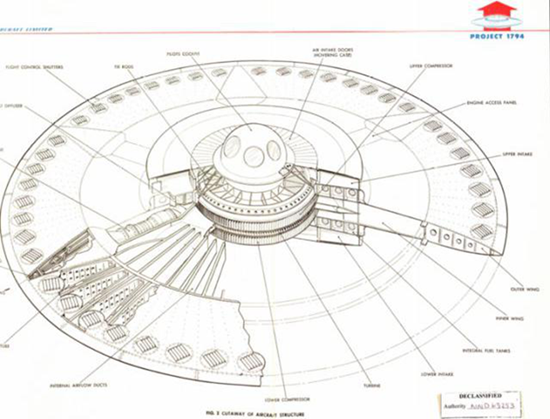
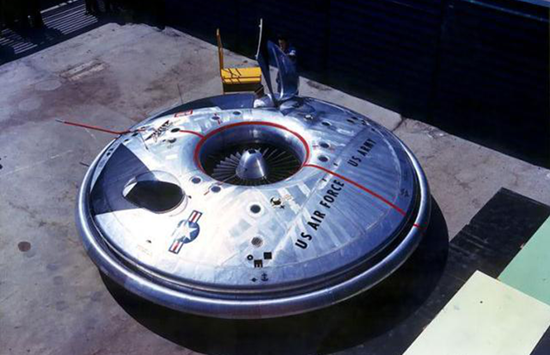

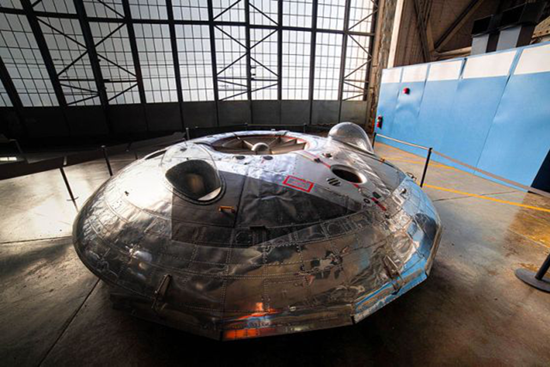
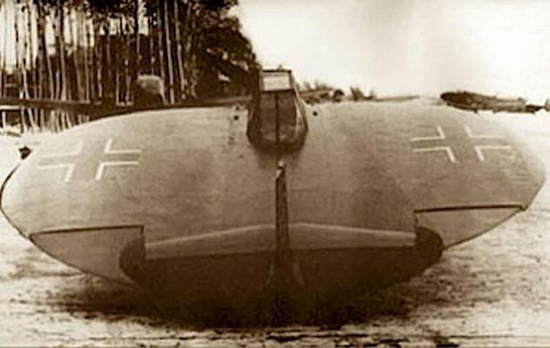

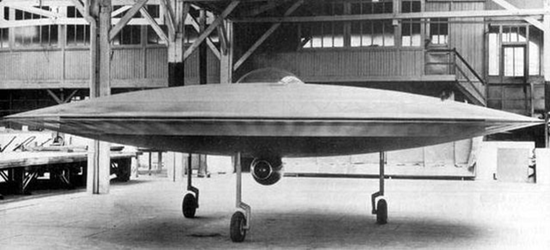

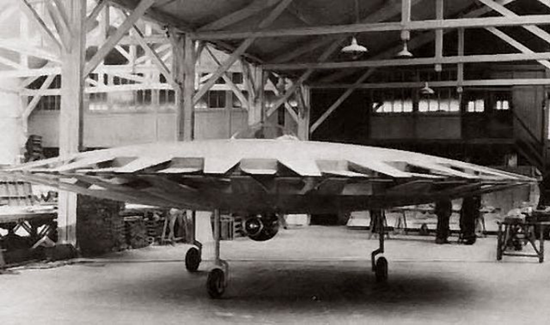
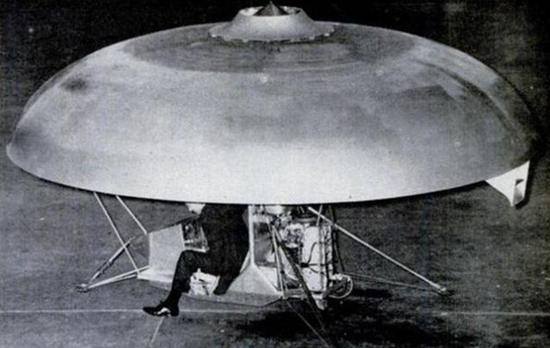
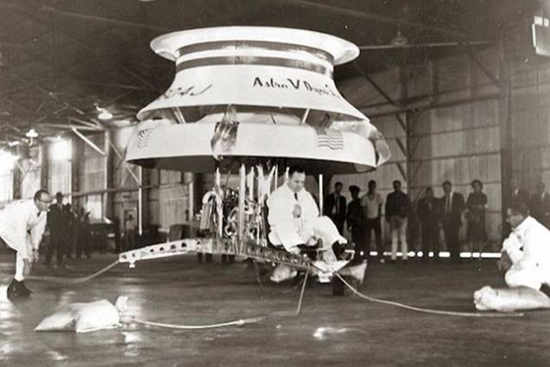

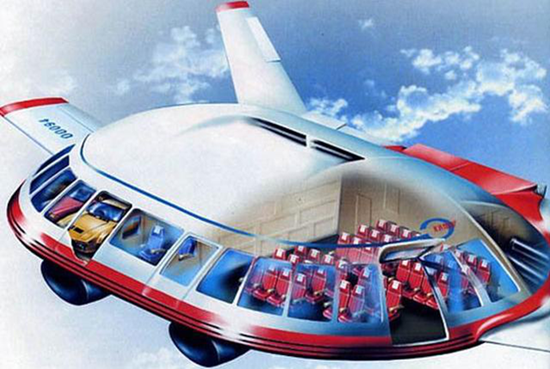
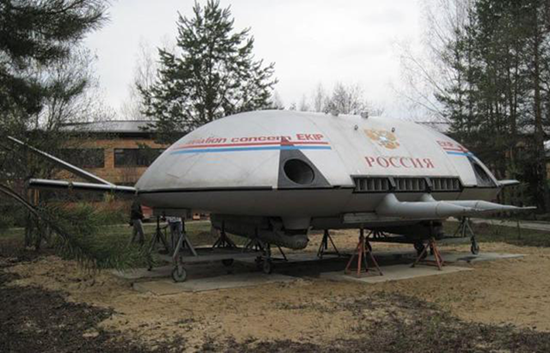
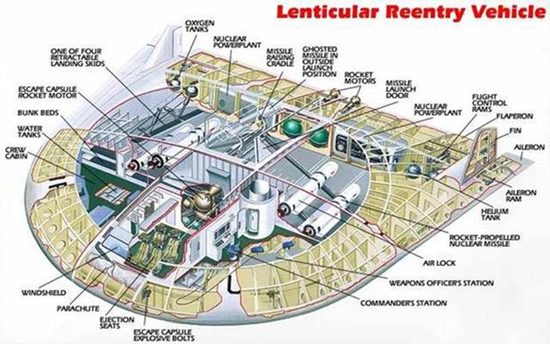
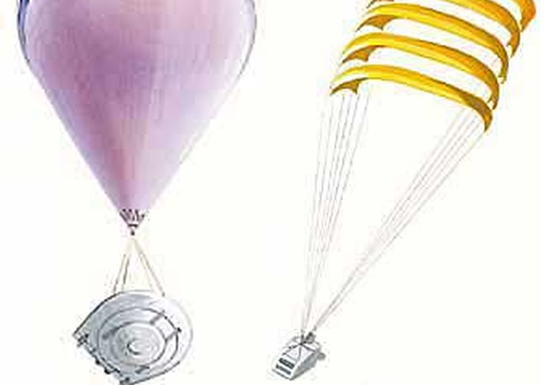
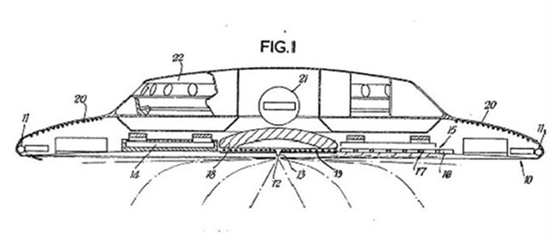
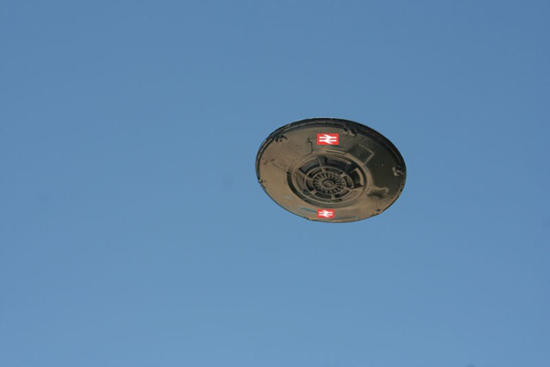
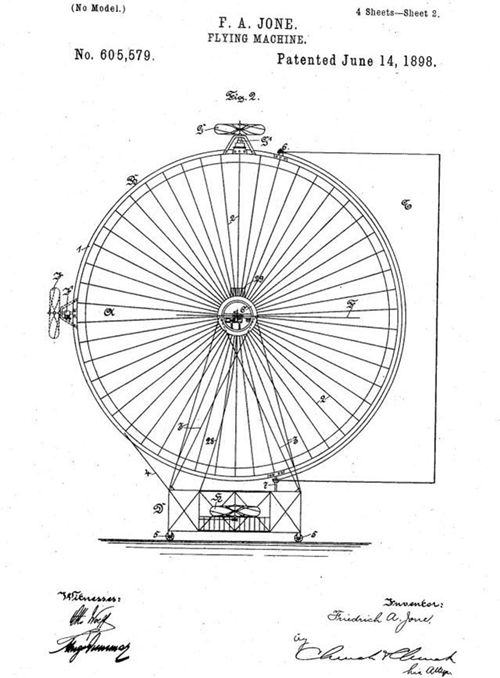


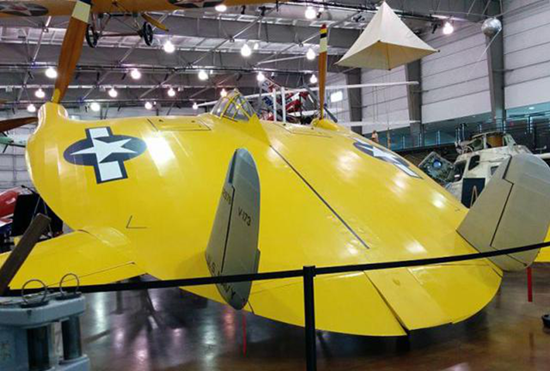
No comments:
Post a Comment
Please adhere to proper blog etiquette when posting your comments. This blog owner will exercise his absolution discretion in allowing or rejecting any comments that are deemed seditious, defamatory, libelous, racist, vulgar, insulting, and other remarks that exhibit similar characteristics. If you insist on using anonymous comments, please write your name or other IDs at the end of your message.